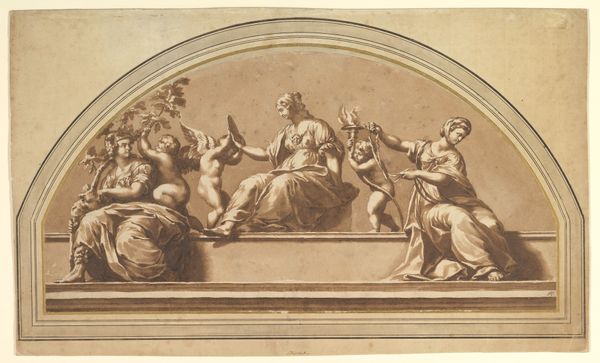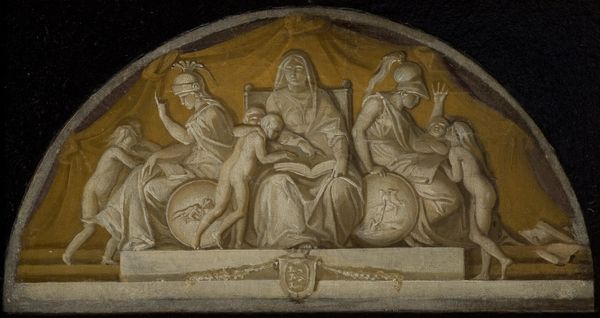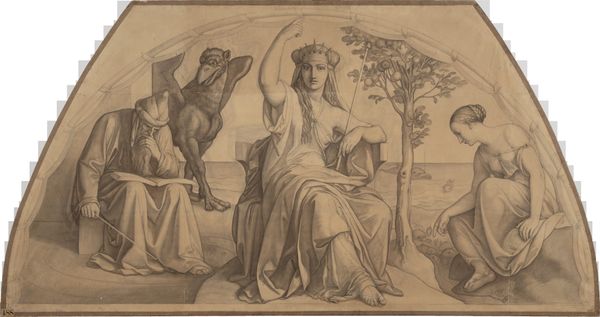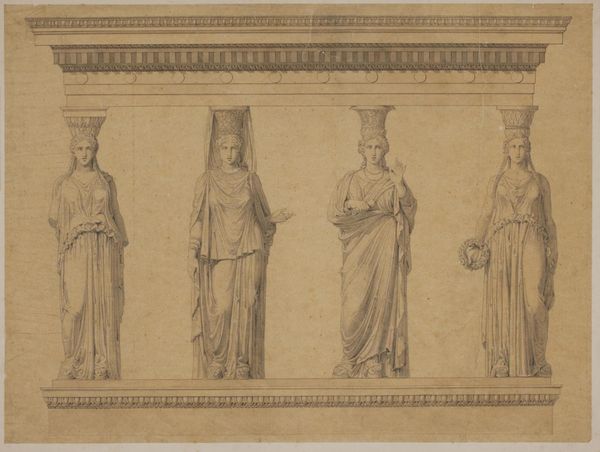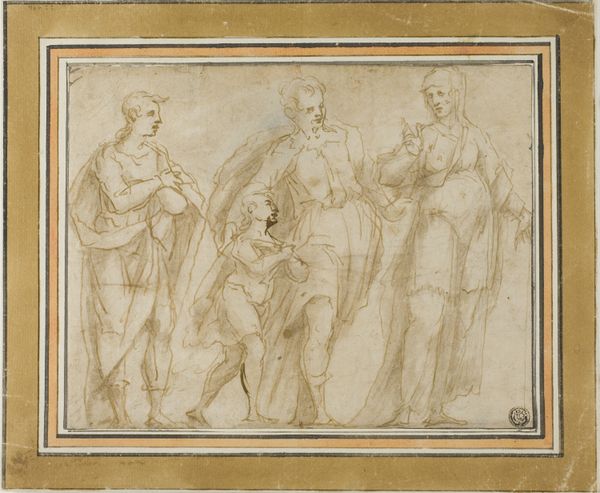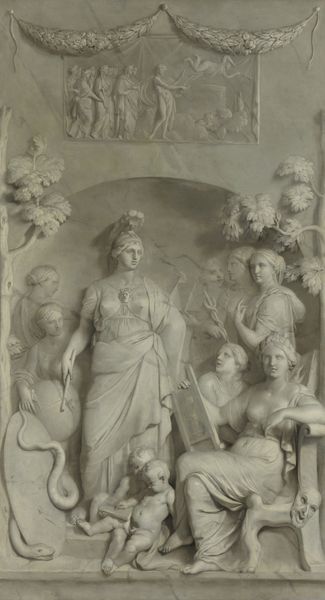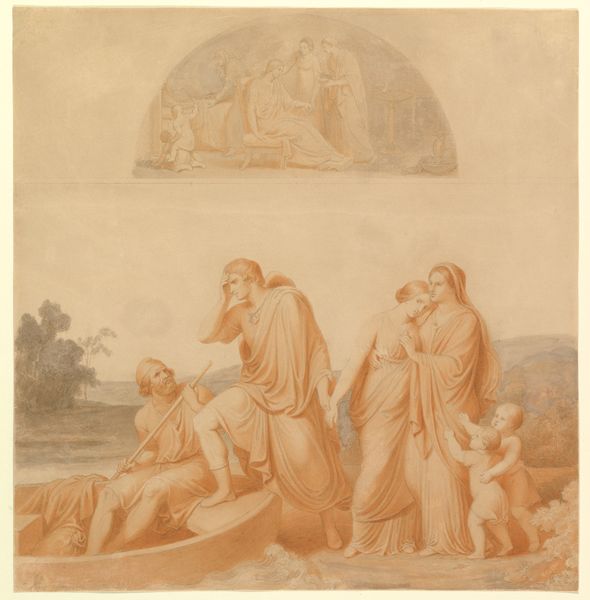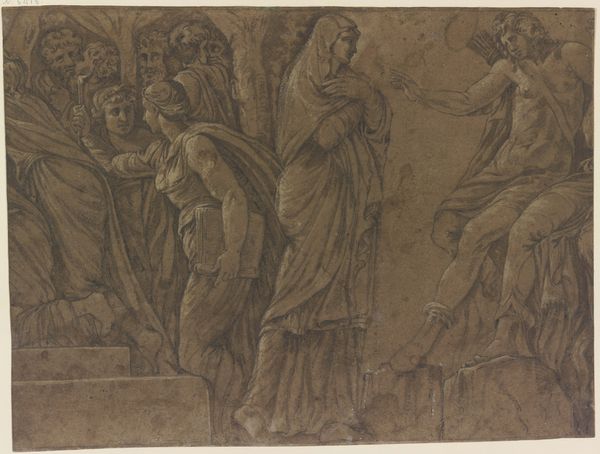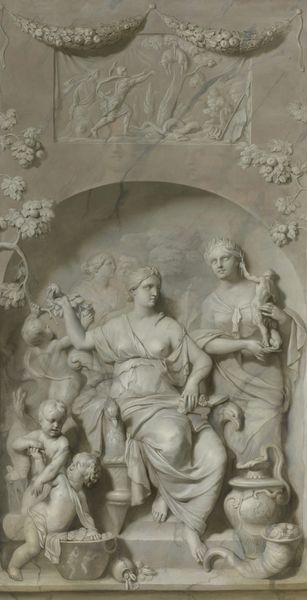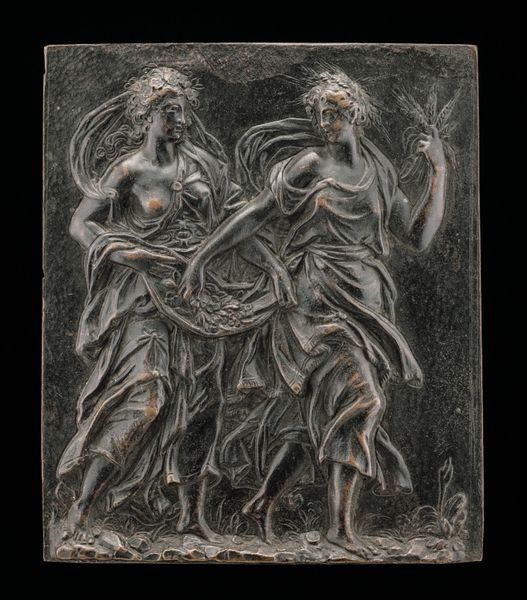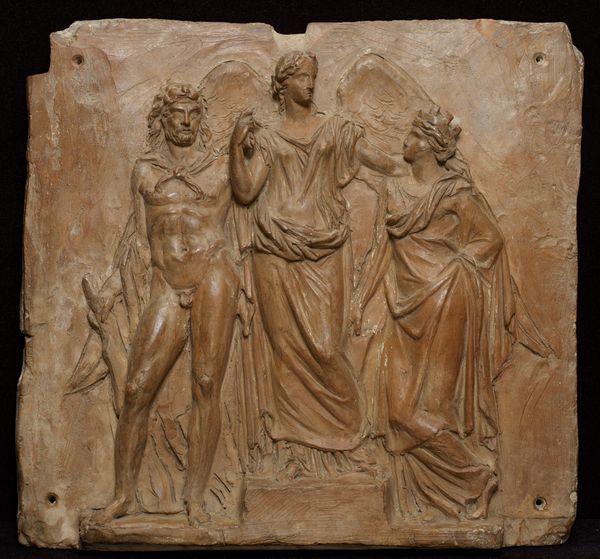
Halvrundt felt med tre runde kvindefigurer, de to yderste med skjolde, der synes at vise, at de fremstiller Norge og nordtyske lande (Stormarn og Ditmarsken?). Den midterste symboliserer formodentlig Danmark 1743 - 1809
0:00
0:00
drawing, charcoal
#
drawing
#
allegory
#
charcoal drawing
#
group-portraits
#
charcoal
#
history-painting
#
academic-art
Dimensions: 184 mm (height) x 357 mm (width) (bladmaal)
Curator: Before us is a charcoal drawing by Nicolai Abildgaard titled, "Halvrundt felt med tre runde kvindefigurer, de to yderste med skjolde, der synes at vise, at de fremstiller Norge og nordtyske lande (Stormarn og Ditmarsken?). Den midterste symboliserer formodentlig Danmark," created sometime between 1743 and 1809. Editor: My goodness, what a title. Even without understanding Danish, it speaks volumes. Visually, it strikes me as an odd mix of imposing monumentality, thanks to the grouping, and yet rendered in rather soft charcoal hues. It feels almost ghostly. Curator: Indeed, the ambiguity is potent. The semi-circular composition lends a classical feel, a deliberate nod to ancient friezes, but it's rendered with what could be seen as almost proto-Romantic sensibilities through this choice of material, as the chalk softens the forms almost into oblivion. Editor: Note the deliberate choice of figures, these idealized female forms holding shields inscribed to stand in as allegorical representations of nations, Norway, Denmark, and northern German territories. Abildgaard is playing with established iconographies but subtly undermining them. Are these guardians, rulers, or something else entirely? Curator: It’s not an anomaly in Abildgaard’s output. We observe an engagement with academic art historical painting traditions that emphasizes the socio-political moment by illustrating nationalism as imagined through personified symbols. Notice how they relate to each other physically in a moment that is not perfectly unified. There seems to be a disquiet between them. Editor: Exactly! This isn't just about aesthetics or refined composition. There’s an underlying commentary here, perhaps on the complex, sometimes tense relationship between these Scandinavian and northern German regions. It makes you wonder what kind of power dynamic Abildgaard saw during his lifetime, rendered onto this simple surface. Curator: Considering the Danish context of that period, it invites viewers to reflect on the allegorical implications embedded within what seems a purely formal exercise of Academic Art, even two centuries later. It suggests the importance of critical art historical methodologies for understanding what art accomplishes in social life. Editor: I agree. Its subdued palette and ghostly outlines challenge any easy reading. We begin with formalism and its structures that provide a sense of academic establishment before quickly delving into historical-cultural relationships that challenge this stability, offering more than what might be suggested at first glance.
Comments
No comments
Be the first to comment and join the conversation on the ultimate creative platform.

